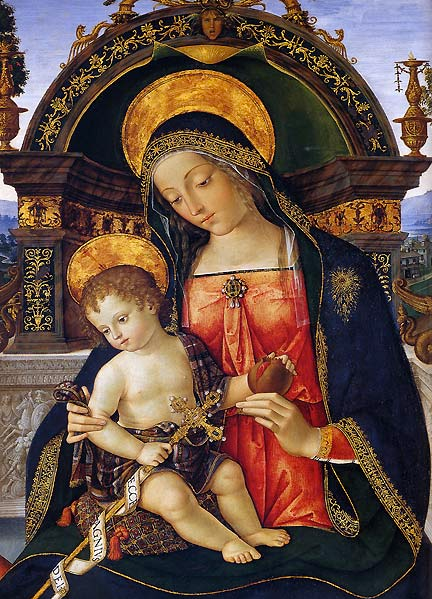FINDING MARY IN THE SCRIPTURES – Part III
Fr. James McMillan, SMM
FINDING MARY . . .
FOR CENTURIES THE CHURCH has been taking passages from the Old Testament books . . .
. . . of the Bible and applying them in its liturgy to the Blessed Virgin Mary. This is especially true with reference to the great women of the Old Testament. Of course, the Church does not apply these passages literally. “Blessed are you in every tent of Judah,” was said of Judith, not the Blessed Virgin. But since many of these texts could just as easily have been said of Our Lady, the Church doesn’t hesitate to accommodate them to her.
. . . IN THE SCRIPTURES
This is one way the Church has of reminding us of what Vatican Il stated: Our Lady is “already prophetically foreshadowed in the promise of victory over the serpent”. It is in the light of the fulness of revelation that we can now see how the praises heaped upon some of the women of the Old Testament can apply, in a deeper and truer sense, to the Blessed Virgin Mary.
In fact, it is not outlandish to believe that women like Sarah, Rachel, Rebecca, Miriam, Deborah, Esther and Ruth are in the Bible to give us this “prophetic foreshadowing” of the Mother of God, to prepare the human race for the advent of the woman who was to say: “Behold the handmaid of the Lord; be it done unto me according to thy word.”
There are times when writers and speakers tend to portray Our Lady as someone who was totally passive, subservient, without a mind or will of her own. They speak of the Annunciation as though Our Lady had no decision at all to make; the only thing she could do was to accept. They stress how it was St. Joseph who brought her to Bethlehem for the birth of Christ, who took her to Egypt, who brought her back to Nazareth. Submission and acceptance seem to be the main virtues that they emphasize in the Blessed Virgin.
JUDITH AND ESTHER
BUT THE “PROPHETIC foreshadowing” of Our Lady through the great women of the Old Testament gives us an entirely different outlook.
These were dynamic, courageous people who could and did make decisions that affected the welfare, and at times even the survival, of God’s chosen people. This is certainly true of Judith and Esther, two women of extraordinary character whom the Church compares to our Blessed Lady.
JUDITH
Judith, the Bible tells us “was a woman very fair to see, and her husband had left her great wealth, a full household, and lands well stocked with cattle and sheep; a woman of high repute everywhere, and the Lord’s devout worshipper; no man had a word to say in her dispraise.” She it was who alone was able to stir up the courage of the Israelites against the invading Assyrians, calling upon them to trust in the Lord God of battles to deliver them from slavery and death. She went to the tent of the Assyrian general, Holofernes, tricked him into a drunken stupor and then killed him. This is by no means a fearful, submissive or passive woman, but one whose courage and trust in God was a foreshadowing of our Blessed Lady.
ESTHER
Esther had a like role to play. King Assuerus, another invader of Israel, was so taken by her beauty and charm that he offered her half of his kingdom. Instead, she begged for the lives of her people with the kind of persuasiveness that the king could not resist. It was because of her prayers and intercession that God’s chosen people once again escaped slavery and death. And Esther was acclaimed as “the glory of our people.”
COURAGE AND POWER OF INTERCESSION
THESE ARE ONLY TWO examples of this kind of “prophetic foreshadowing.”
They bring out two of the attributes of Our Blessed Lady: her courage and her power of intercession. And courage is one virtue that Our Lady certainly shows in the gospels. It took a great deal of faith and trust in God to accept her role as Mother of the Redeemer. It took a great deal of courage as well. She knew what she was being offered: the Motherhood of God made man. But she had little understanding of what this was to entail.
The angel Gabriel spoke only of her Son in terms of glory: “He shall be great and shall be called the Son of the Most High, and the Lord God will give Him the throne of David his father and He shall rule over the house of Jacob forever, and of His kingdom there shall be no end.” There was no mention of suffering and death for her Son, no mention of her having to stand at the foot of the cross and watch Him die.
As for her power of intercession with Christ, it is certainly far greater than that of Esther. This is made clear in the gospels with the story of the marriage feast of Cana. It was through her prayers for the young couple that Christ changed water into wine, even though He had told her: “My hour has not yet come.” It is this power of intercession that she uses for our sake in heaven, a power the Church tells us, she will exercise “until the eternal fulfillment of all the elect. “

Madonna and Child: Italian Painter: Pinturicchio (1454-1513)
Also known as Pintoricchio or Pinturicchio. His formal name was Bernardino di Betto, also known as Benetto di Biagio or Sordicchio.


